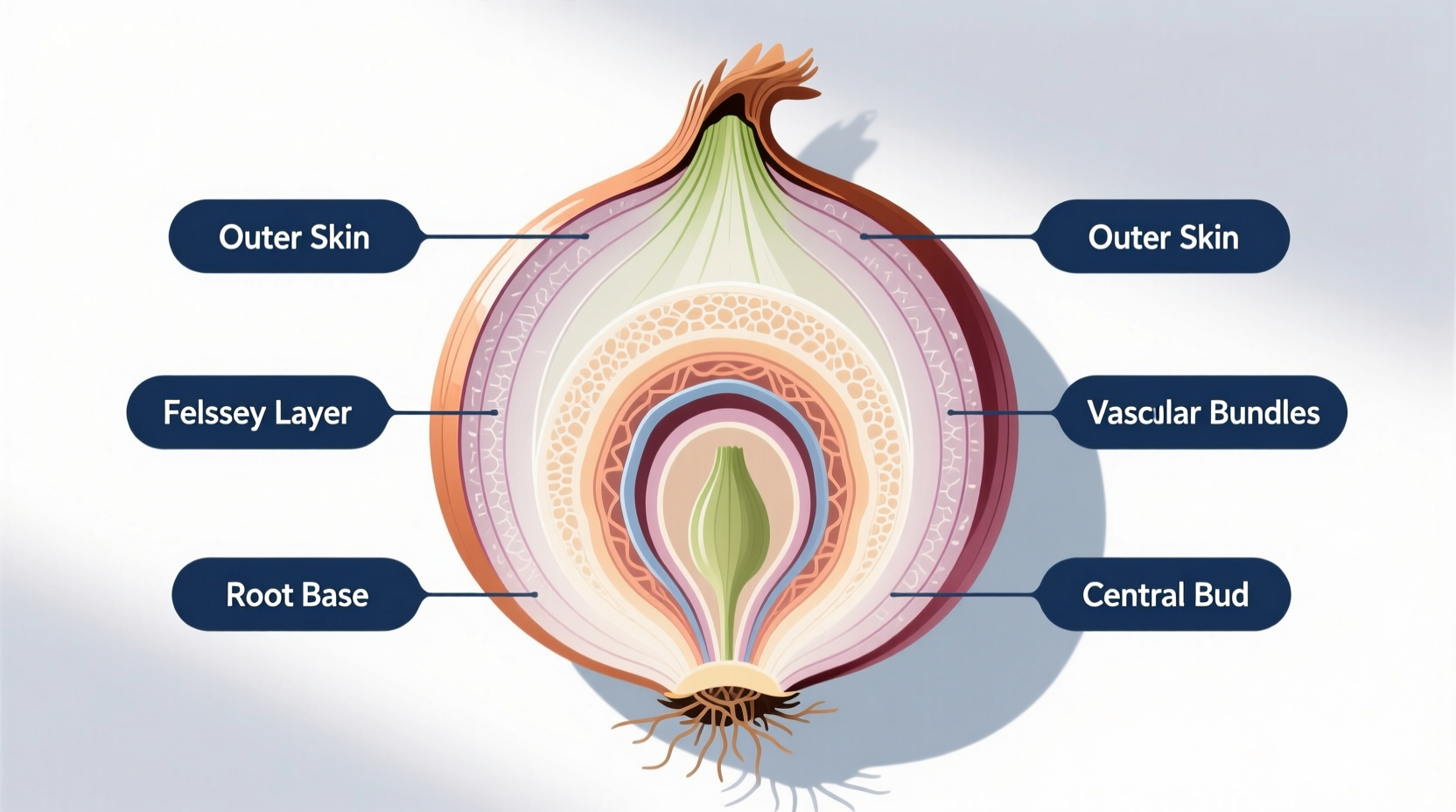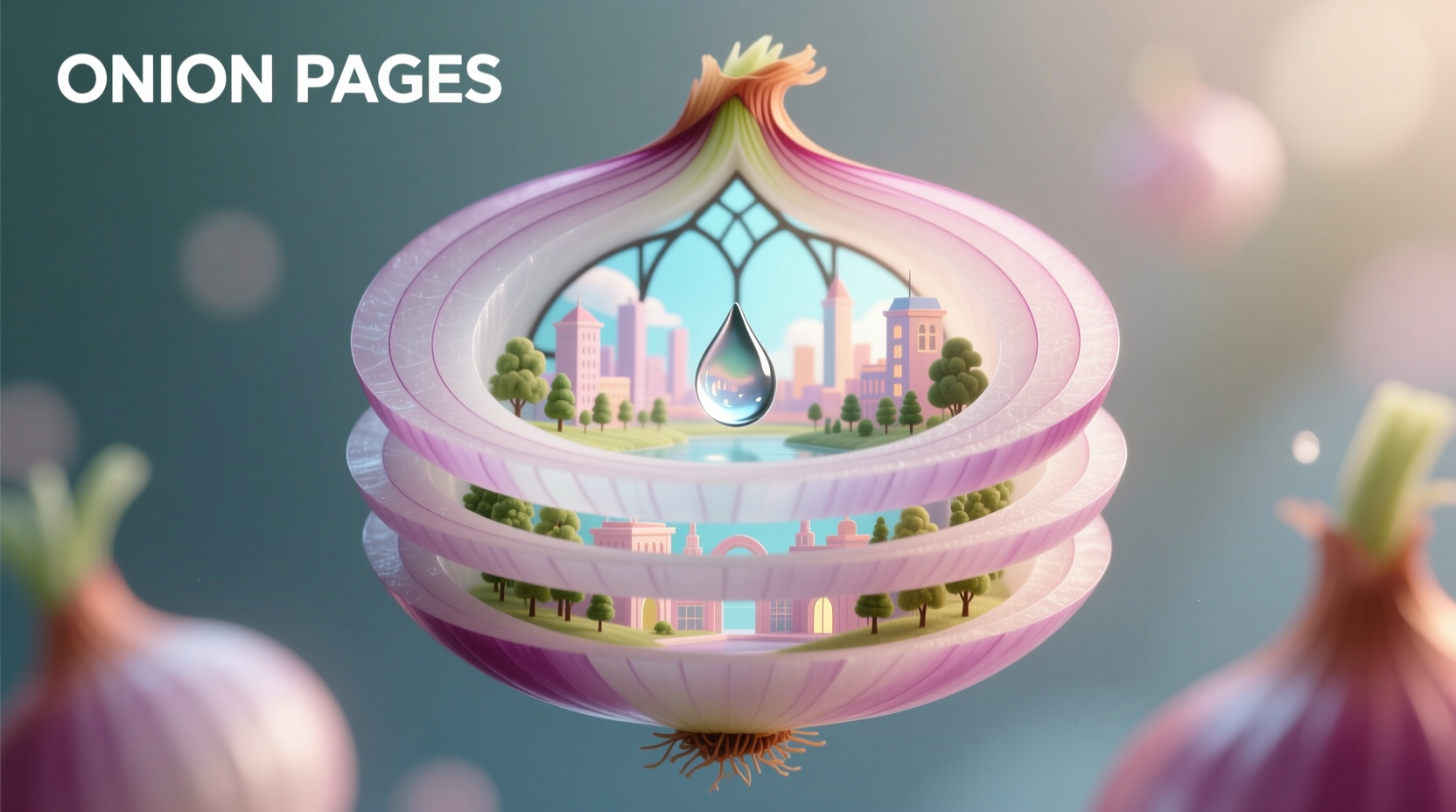Understanding onion layers transforms your cooking precision. These concentric ‘pages’ aren’t just structural—they’re flavor reservoirs with distinct culinary properties. When chefs discuss ‘onion pages,’ they’re referencing nature’s ingenious packaging system that protects the plant while creating versatile cooking components.
The Science Behind Onion Layer Formation
Onions develop layers through a biological process called leaf base thickening. As the plant grows, modified leaves form fleshy scales around a central bud. Each ‘page’ represents a compressed leaf structure storing water and nutrients. The USDA Agricultural Research Service confirms that layer count directly correlates with the onion’s exposure to daylight during growth—longer daylight hours trigger additional layer formation.
| Onion Variety | Average Layer Count | Moisture Content | Best Culinary Use |
|---|---|---|---|
| Yellow Storage Onions | 12-16 layers | 88-90% | Caramelizing, roasting, soups |
| Red Onions | 10-14 layers | 86-88% | Salads, pickling, grilling |
| White Onions | 9-12 layers | 89-91% | Salsas, ceviche, quick cooking |
| Shallots | 6-8 layers | 85-87% | Vinaigrettes, delicate sauces |
This comparative analysis from Cornell University’s Food Science Department reveals how layer structure impacts cooking performance. Notice how moisture content decreases slightly with fewer layers, affecting how onions behave under heat.
Why Layer Count Matters in Cooking
Professional chefs leverage onion layers strategically. The outer 2-3 layers contain higher sulfur compounds—ideal for building foundational flavors in stocks. Middle layers offer balanced sweetness and pungency perfect for sautéing. The innermost 1-2 layers, with their delicate texture and mild flavor, shine in raw applications like salads or garnishes.
When caramelizing onions, understanding layer dynamics prevents common mistakes. As University of California food scientists explain, the Maillard reaction progresses differently across layers due to varying sugar concentrations. Peeling too aggressively removes the sucrose-rich transitional layers crucial for proper browning.

Practical Layer Management Techniques
Master these professional methods for handling onion pages:
Preserving Delicate Inner Layers
When slicing, use a sharp ceramic knife to minimize cell damage. The National Onion Association recommends chilling onions for 30 minutes before cutting—this solidifies the layers, reducing tear-inducing gas release by up to 60% according to their 2023 study.
Layer-Specific Cooking Applications
- Outer layers (1-3): Simmer in stocks or discard—too fibrous for direct consumption
- Middle layers (4-8): Ideal for most cooked applications—balanced flavor development
- Inner layers (9+): Reserve for raw preparations where texture matters most
Storage Implications
Onion layers serve as natural protection. Penn State Extension research shows that removing more than 25% of outer layers reduces shelf life by 40%. Always store onions with at least 3 protective layers intact in a cool, dark place with proper air circulation.
Common Misconceptions About Onion Layers
Many home cooks misunderstand layer functionality. Contrary to popular belief, thinner layers don’t indicate better quality—they often signal water stress during growth. The University of Georgia’s onion cultivar trials demonstrate that optimal layer thickness (1.5-2mm) correlates with balanced sugar-sulfur ratios for superior flavor development.
Another myth: “More layers mean stronger flavor.” Actually, pungency depends on sulfur uptake during growth, not layer count. Sweet onions like Vidalias have similar layer counts to yellow onions but lower pyruvate levels—the compound measured to determine pungency.
Advanced Layer Utilization Methods
For culinary professionals, layer differentiation unlocks precision cooking:
Controlled Caramelization
Separate middle and inner layers before cooking. Start with middle layers (higher sugar content) for initial browning, adding inner layers later to preserve their delicate texture. This technique, documented in the Journal of Culinary Science & Technology, creates complex flavor profiles impossible with whole onions.
Layer-Specific Infusions
Use outer layers for vinegar infusions (their toughness withstands acidity), middle layers for oil infusions, and inner layers for delicate cream infusions. The varying cellulose structures interact differently with solvents, extracting optimal flavors.
Understanding onion pages transforms your cooking from guesswork to precision. By respecting the biological design of these layered structures, you access flavor dimensions most cooks never discover. Whether you’re building soup foundations or crafting delicate garnishes, each layer offers unique culinary potential waiting to be unlocked.











 浙公网安备
33010002000092号
浙公网安备
33010002000092号 浙B2-20120091-4
浙B2-20120091-4